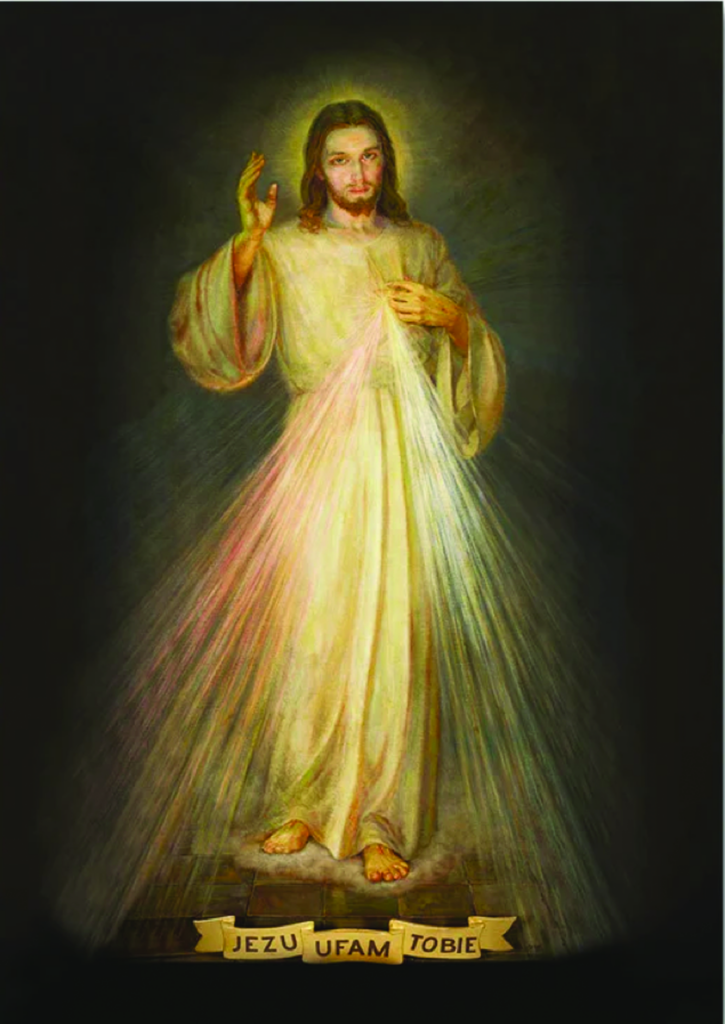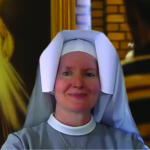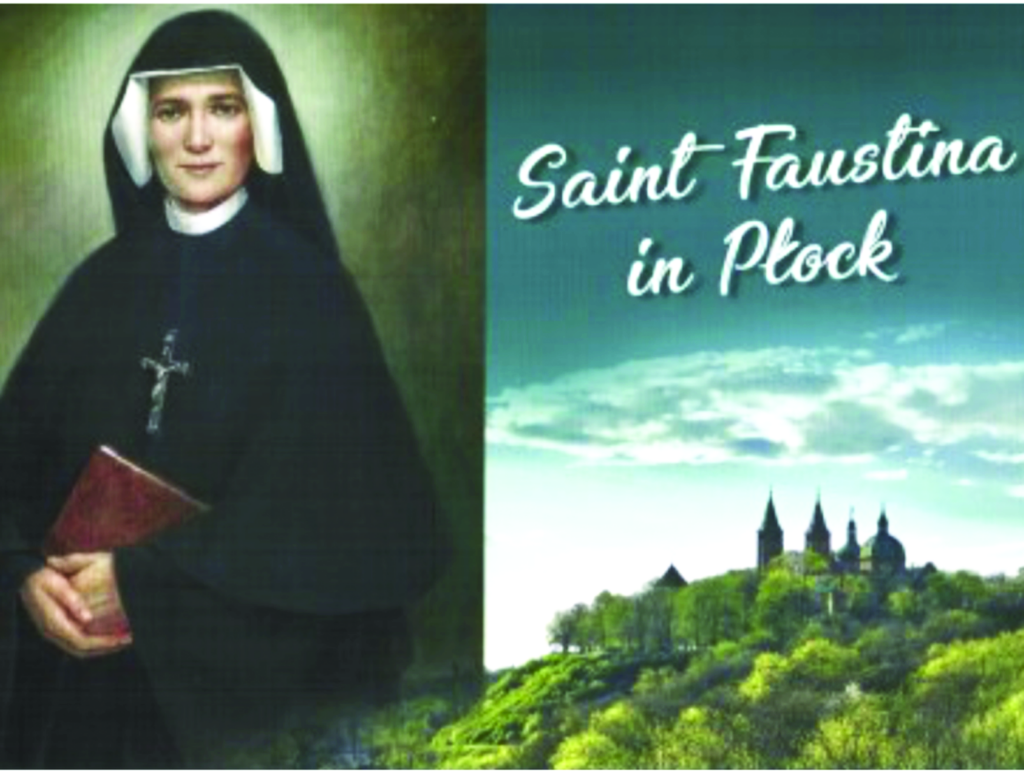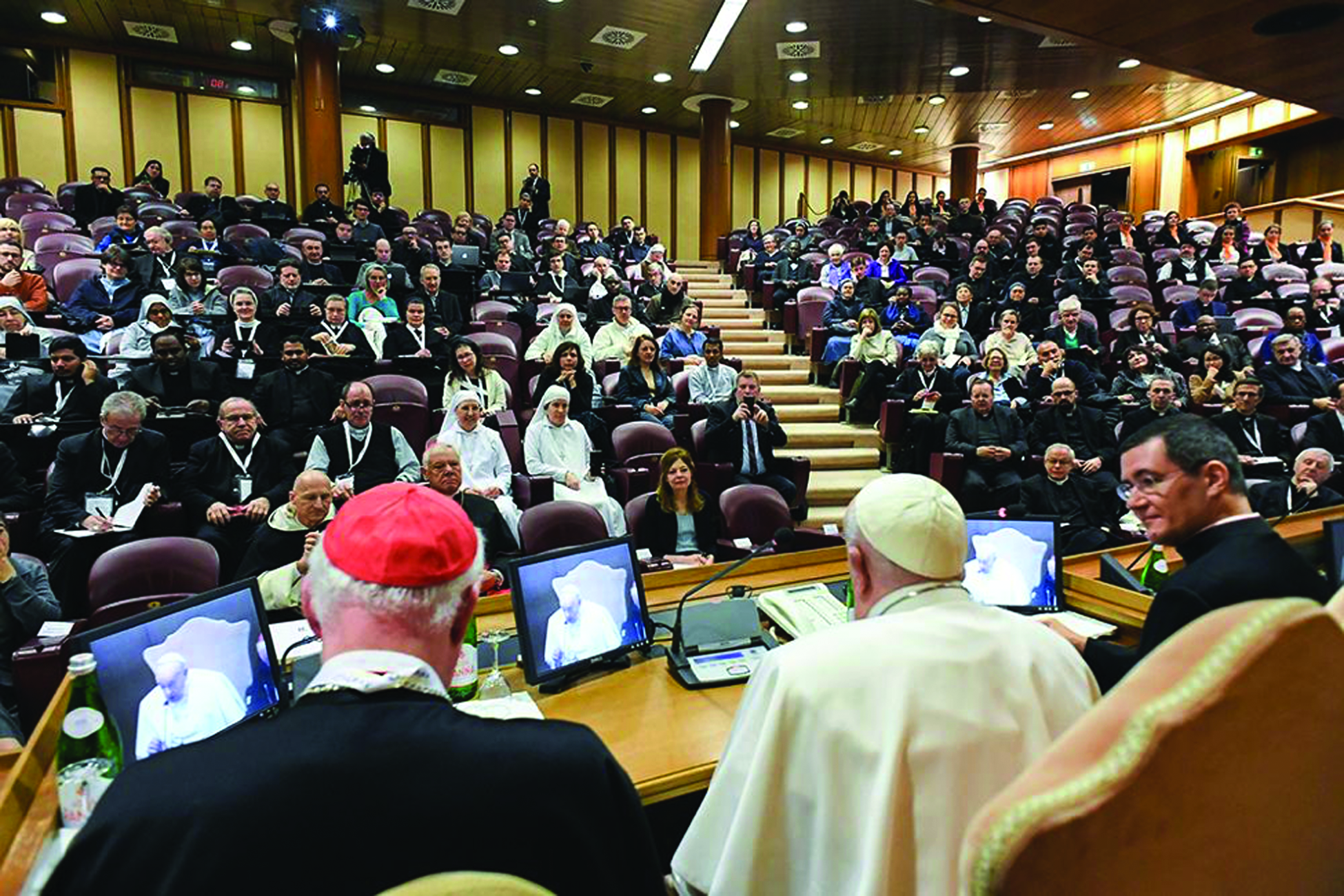Polish Sr. Salvatrice Musial speaks about the call of Divine Mercy, part two
By Barbara Middleton

Divine Mercy image is a painting by Adolf Hyla 1943. Here with the wordsPolish “Jesus I Trust in You” appear in copia
Jesus’ gaze is full of mercy and tenderness
Barbara Middleton founded the Holy Trinity Apostolate with the late Fr. John Hardon, S.J., dedicated to bringing “the splendor of truth” to the faithful through the media. This is Part 2 of her interview with Sr. Salvatice Musial, the Polish nun who wrote St. Faustina in Plock, a book on the convent where the seed of the Divine Mercy devotion was first planted.
Barbara Middleton: What is the main message of Jesus about His Divine Mercy?

Sister Salvatrice Musial, O.L.M. has been in the Congregation of Sisters of Our Lady of Mercy for 30 years. Her name, of Italian origin, means “God saves”
SALVATRICE MUSIAL: I quote the famous words of Jesus from the Diary of Saint Faustina: “In the Old Covenant I sent prophets wielding thunderbolts to My people. Today, I am sending you with my Mercy to the people of the whole world. I do not want to punish aching mankind, but I desire to heal it, pressing it to My Merciful Heart.”
The Diary reveals her mission, and at its center, the most beautiful Mystery of the Divine Mercy, to be proclaimed to the whole world with new power, through the testimony of our own lives.
Jesus entrusted Sr. Faustina with His message right before the outbreak of the Second World War.
This message of “Christ tormented and risen, which was initiated in Plock, became for many people in Poland, and also abroad, a source of unfailing hope and a strength to overcome,” said John Paul II during the Regina Coeli prayer on April 23, 1995.
The message includes the Divine Mercy devotion in its new forms: the image of the Merciful Jesus, the Feast of the Divine Mercy, the Divine Mercy Chaplet, the Hour of Mercy and spreading the devotion to the Divine Mercy. Jesus attached great promises to each of these, provided that one manifests the attitude of complete trust in God, willing to do His holy will and actively love one’s brothers and sisters.
The apostolic movement of the Divine Mercy was born in the Church out of her charism and the mystical experiences of both religious and lay individuals undertaking the mission of Saint Faustina, the Apostle of the Divine Mercy.
Tell us about the original painting of Merciful Jesus that was painted according to Sr. Faustina’s direction after Jesus requested it?
SALVATRICE: St. Faustina was not capable of painting. It was only in 1933, in Vilnius (formerly part of Poland), that she met Father Sopocko, her confessor, who knew a painter and helped her execute the mission.
The first image of the Merciful Jesus was painted in the studio of Eugeniusz Kazimirowski. He worked for almost half a year, beginning in January 1934. From her convent in Antakalnis, Sister Faustina visited the workshop once or twice a week to give further instructions, each time preceded by a visit to the famous Shrine of Our Lady of the Gates of Dawn to pray.
Today, this original painting of Merciful Jesus — the first in a timeline of paintings — has found its home at the Sanctuary of Divine Mercy in Vilnius, Lithuania.
Another image of Merciful Jesus dear to our Congregation is one created by Adolf Hyla in Cracow in thanksgiving for the preservation of his family during World War II, now displayed at the Shrine of the Divine Mercy in Cracow-Lagiewniki, Poland. Amazingly, the Divine Mercy image has found an prominent place all over the world: in prison chapels, in a ballet school in Lebanon, in a Biblical School in Jerusalem, in a restaurant in Mexico, in a wealthy estate in Argentina, in a poor mud hut in a village in Cameroon, in an American military base, in a small wooden church in Nagayama in the outskirts of Tokyo, and even in a huge international airport.
What does the imagery contained in the Divine Mercy painting mean?
SALVATRICE: The picture is both a sign and a visual synthesis of the whole Divine Mercy message: it reminds us of the mystery of God’s merciful love for man as revealed in Jesus’ life and in the Holy Scriptures; it exhorts us to form the Christian attitude of trust towards Him and mercy towards our neighbor and, on the other hand, it is a vessel for drawing graces to which He attached many promises.
Jesus explained to Sister Faustina the meaning of the two rays in the iconic image, emerging from a fold in the robe on His chest: “The two rays denote Blood and Water. The pale ray stands for the Water which makes the soul righteous. The red ray stands for the Blood which is the life of souls(…). These two rays issued forth from the very depths of My tender Mercy when My agonized heart was opened by a lance on the Cross” (Diary 299).
These rays testify to the mystery of the Holy Church in which God acts Himself and gives Himself to us in the Holy Sacraments, which all restore life within us, and purify and nourish our souls. Jesus’ gaze from this image, as He confirmed, is like His gaze from the cross (Diary 326) full of mercy and tenderness. Jesus asked that three words be clearly in evidence in the picture: Jesus, I trust in You. The Saviour promised numerous graces to all those who will venerate Him through this image.
“I desire,” said Jesus, “that the Feast of Mercy be a refuge and shelter for all souls, and especially for poor sinners. On that day the very depths of My tender mercy are open. I pour out a whole ocean of graces upon those souls who approach the Fount of My Mercy (…) The Feast of Mercy emerged from My very depths of tenderness for the comfort of the whole word.” (Diary 699).
Jesus Himself selected the day for a Feast of Mercy on the first Sunday after Easter, leaving us in the atmosphere of Paschal events. That Sunday’s Gospel depicts the risen Lord visiting the fearful Apostles in the Cenacle, where He reveals the Fount of His unfathomable Mercy – His pierced heart out of which the Church and Holy Sacraments are born. Sister Faustina wrote in her Diary: “I understood that the greatest attribute of God is love and mercy” (Diary 180.)
Jesus delights us with His generosity when on that day he opens the abyss of His Mercy for all those wounded with sins — miserable, crestfallen and suffering spiritually and physically. His words to Sister Faustina help us understand this generous gesture. “Let no weak, sinful soul have fear to approach Me, for even if it had more sins than there are grains of sand in the word, all would be drowned in the unmeasurable depths of My mercy. (Diary 1059). On that day the very depths of My tender mercy are open.” (Diary 699).
The Eucharist, the center of Christian celebration, presents the mystery of the covenant of God with His people. And it is Holy Communion received on the Feast of Divine Mercy to which Jesus attached His unique promise: “Whoever approaches the Fount of Life on this day will be granted complete remission of sins and punishment” (Diary 300, see 699).

The cover of Sr. Salvatrice Musial’s book, Saint Faustina in Plock
The rays are the grace of the sacraments, which restore life
How did the message of St. Faustina influence your own vocation?
SALVATRICE: Cracow, where I was born, was a natural environment for me to think of religious vocation, with so many religious sisters everyday in the streets. But above all, I remember how beautiful my home was, where my parents were praying every day with us and blessing God. I received my first Diary of Saint Faustina when I was a teenager, and then, for my Confirmation, a big framed picture of Divine Mercy. That first encounter with the writings of Saint Faustina, and all the more, the love in my heart for the Merciful Jesus which it inspired, influenced my vocation.
Let us remain with this question of God’s call in our lives. In summer, the sky over Plock turns an unforgettably beautiful azure, while the Vistula river and the quay with its sandy beach and succulent greenery welcome both local citizens and tourists. The city transforms itself into one big “amphitheater,” offering cultural, musical and sporting events.
Still, this colorful world might be looked at from another perspective. A city is a sign of our times, combining two extremes: it is a place of God’s presence, enriching and serving the needs of its citizens; but also a place full of indifference and loneliness — a great desert, and the oasis one longs for is not seen.
God knows our human misery perfectly well; He knows our “deserts”; He longs to be close to us.
The reality is that the desert may bloom again! The desert of the human heart might be brought back to life: Divine Mercy can perform this miracle!






Facebook Comments